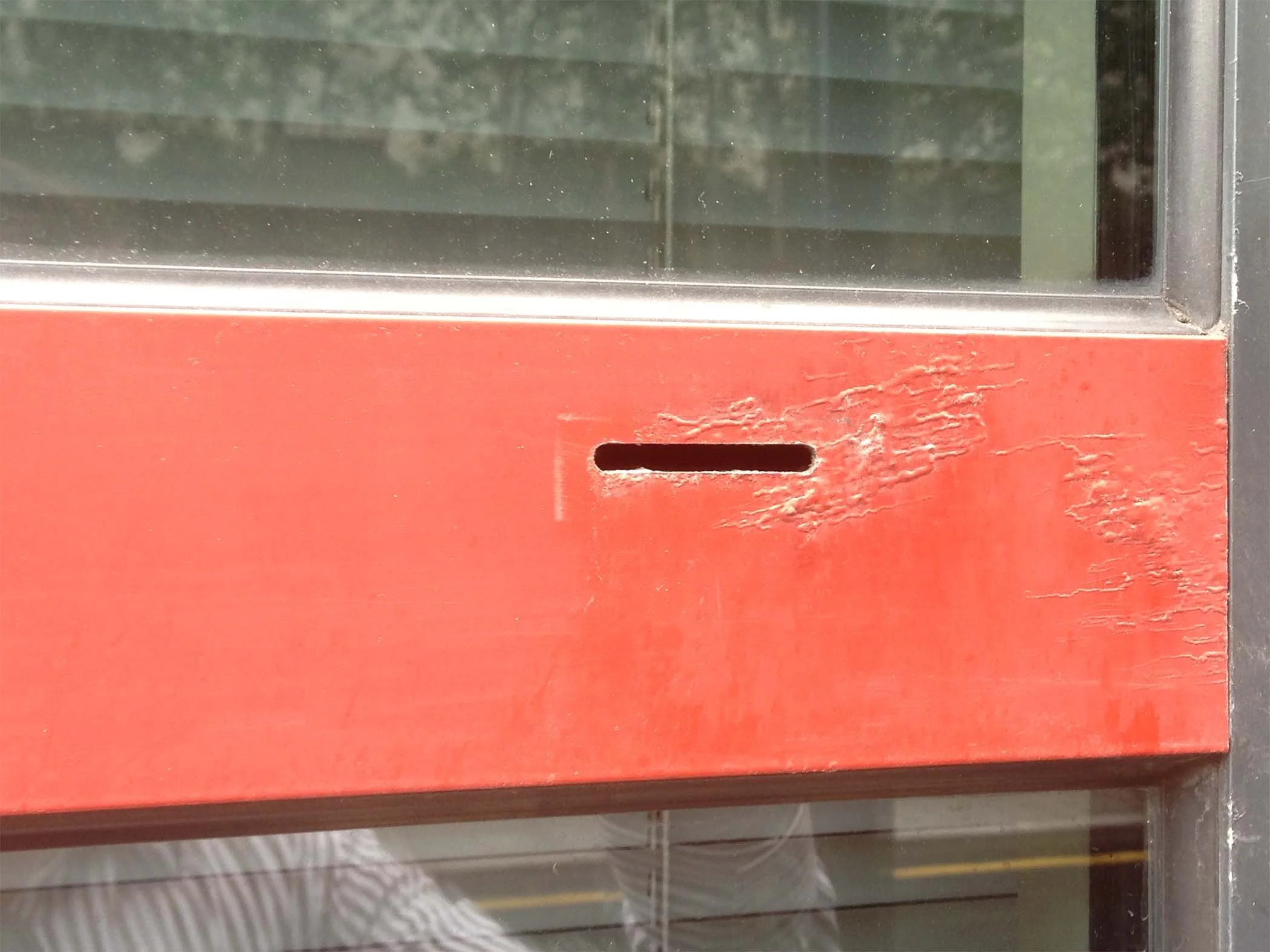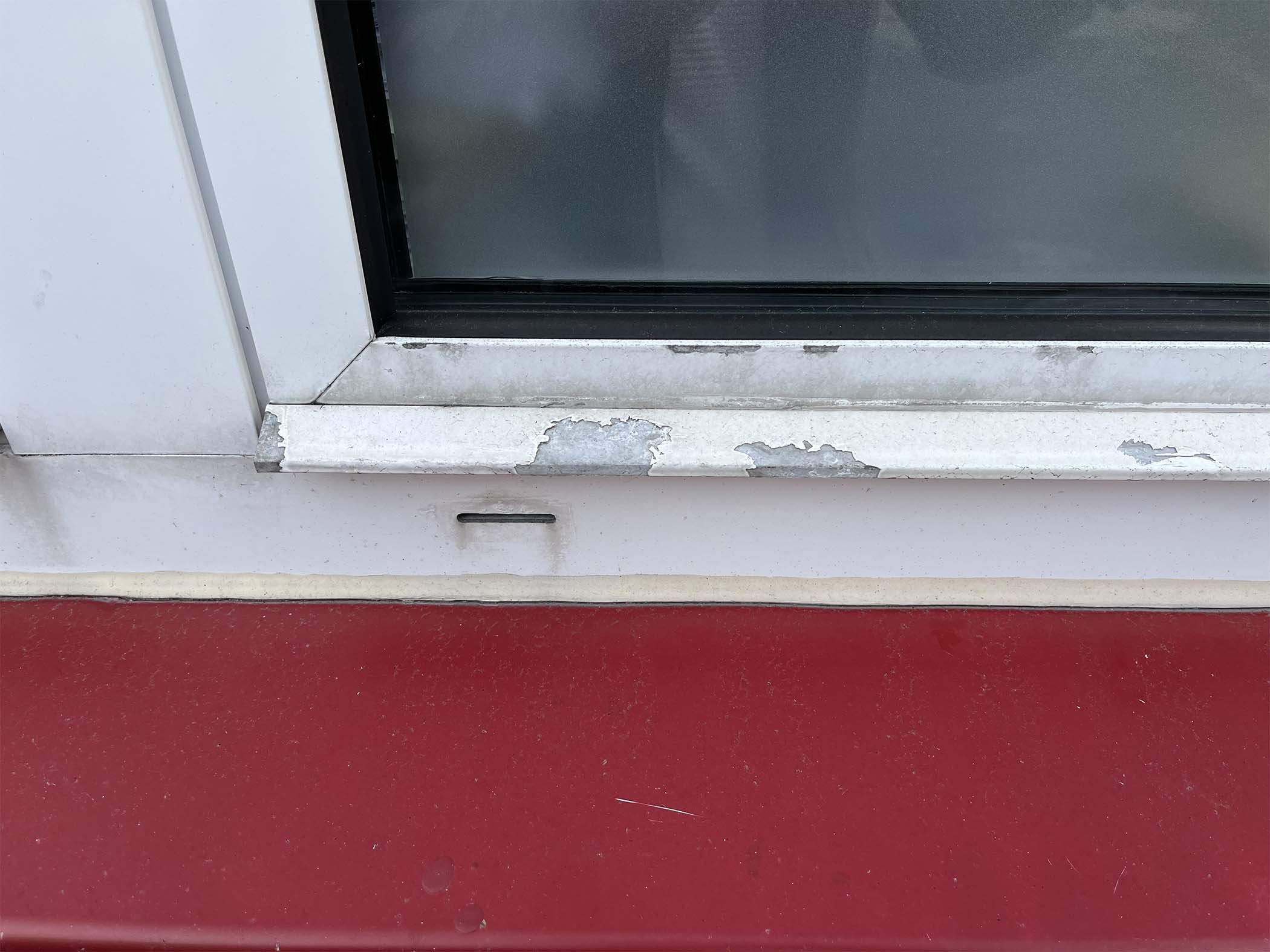Avoiding Architectural Powder Coat Failures
Filigree powder coat failure
Architectural Aluminium Powder Coating is applied using the well known methodology of spraying electrostatically charged fine polyester based powders onto a product. Coated aluminium products are then heated to an optimum temperature to melt the powder which allows it to flow and chemically cross-link into a sustainable coating. As the product cools the coating sets and the finish is complete. The problem is, like most applied opaque coatings, the finish may look good, but the coating can hide a multitude of problems on the surface of the metal. If contaminants are present, or a pretreatment process is lacking, a failure of the coating will become evident over time.
A powder coated finish is generally porous, this allows some air and moisture to reach the aluminium surface. When the aluminium eventually begins to oxidise, any applied powder coating will lose its adherence, no matter the quality of the coating itself.
Newly formed aluminium, as soon as it is exposed to the oxygen in the air, begins to oxidise. Corrosion forms quickly into a very thin layer and slows down as the layer becomes thicker. Invisible to the naked eye at first, the process continues until the oxygen in the air is effectively stopped from gaining access to the exposed aluminium surface. This naturally occurring oxidisation builds up over time to completely seal the surface and form a protective layer, this is why aluminium is sometimes specified unfinished for external metalwork. Whilst a natural finish, this oxidisation is often not seen as an attractive finish and therefore aluminium is either powder coated or anodised prior to being used externally. Anodising is simply a rapid and controlled oxidisation of the surface of the aluminium. Typically just 25 microns in thickness, anodising is very hard and wear resistant, but colours are limited generally to bronze, grey finishes or limited dyed colours.
Prior to powder coating architectural aluminium, it is crucial that the aluminium surface is subject to a ‘pretreatment’ process which includes an etch process to remove contaminants and then a passivation or conversion coating to ‘seal’ the surface of the aluminium which also provides a ‘key’ for the adherence of the coating. These very thin conversion coatings can be formed of a chromate, a non-chromate or even a very thin anodising process.
For an architectural powder coater a pretreatment plant is a significant investment often costing as much, if not more than the powder coating line itself. Few powder coating lines in the UK have this substantial facility and those that do will claim to powder coat to BS EN 12206 or become licensed to powder coat to the more substantial QUALICOAT specification.
So where do things go wrong?
Aluminium corrosion under the powder coating - poor pretreatment
Often in an attempt to reduce costs through the supply chain, installers of architectural aluminium products will use powder coaters who often do not possess the correct pretreatment lines. There is also the possibility that some coaters who do have the correct pretreatment systems do not have the correct controls in place and the quality of the coatings can vary, even though they can claim to coat to BS EN 12206.
A QUALICOAT licensed applicator, on the other hand, has to use a pretreatment system that is QUALICOAT approved and utilise powder systems that are also approved by QUALICOAT, this ensures quality is maintained through the coating process. Furthermore, QUALICOAT licence holders are randomly inspected twice a year to ensure the QUALICOAT specification is being met. Licensed coaters who fail these third party inspections, will lose their licence.
So the best specification for any architectural powder coating project should simply be ‘coated by a QUALICOAT licensed applicator’. Known across the globe, a QUALICOAT specification can be realised on any continent.
Powder coat failures fall into two broad categories, that of a complete failure of the coating where it simply peels off and something called ‘filigree corrosion’ where oxidisation can form at a cut or punched hole in the aluminium and appears as spider like strands of corrosion under the surface of the coating. Often this failure is seen several years after installation and clearly indicates poor pretreatment prior to powder coating.
Other problems with powder coating can include fading of colour, loss of gloss and ‘chalking' of the surface finish. The first two are generally a normal ageing process and the powder coating should still adhere fully to the aluminium and continue to protect the aluminium. Often happening over 20 years or so, ageing of this nature can be reduced by specifying a more robust class of powder such as a QUALICOAT Class 2 which use more robust compounds in its composition. Chalking, is also part of the ageing process, again reduced by specifying Class 2 powder and appears as a milky surface or ‘chalk’ on the coated surface. This only forms when the finish is generally neglected and not cleaned down within an agreed cleaning regime. Often chalking can be removed by simply cleaning the finish several times over a period of time. QUALICOAT powder applicators can normally advise of a suitable cleaning company and there is also a paper on the QUALICOAT UK & Ireland website that explains how to clean the finish.
How to avoid these failures?
Ensure that the powder coater has the necessary pretreatment systems in place and that they can demonstrate that they can coat and test to BS EN 12206. Alternatively, insist on a specification that coating must be applied by a QUALICOAT licensed applicator. In the UK, the majority of main architectural powder coaters are QUALICOAT licence holders. If you are proposing to specify an architectural coater who powder coats to BS EN 12206, be vigilant to ensure that they posses a robust pretreatment plant and that their processes are monitored and maintained.
Should a coating specification require a longer life expectancy, possibly where future access for cleaning be difficult, then a Class 2 more robust powder can be specified. The most important aspect to specification is the involvement of a specialist coater at the early design stages of any project. All QUALICOAT UK & Ireland members are available to offer advise and can be found on the Association website at qualicoatuki.org


